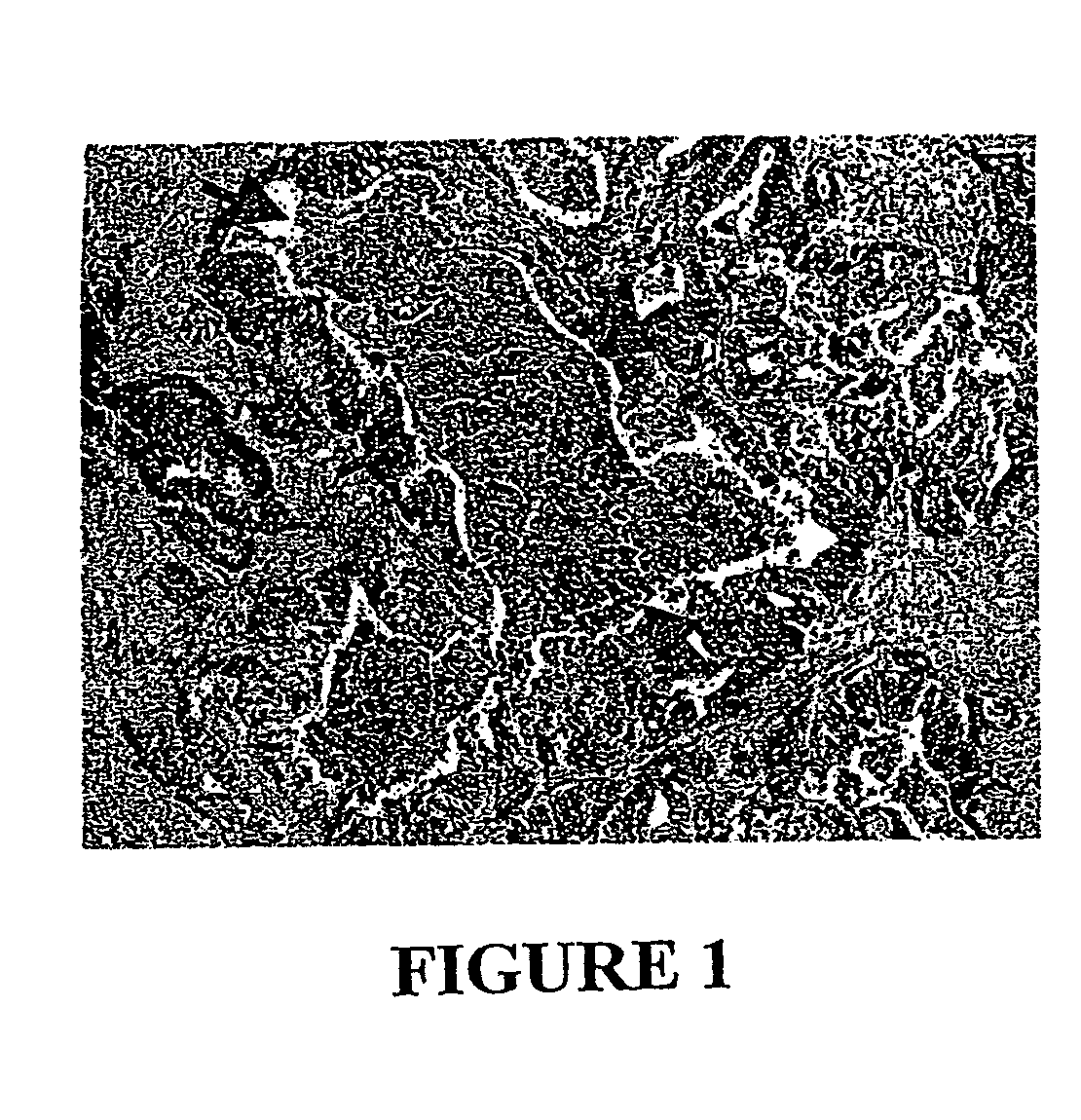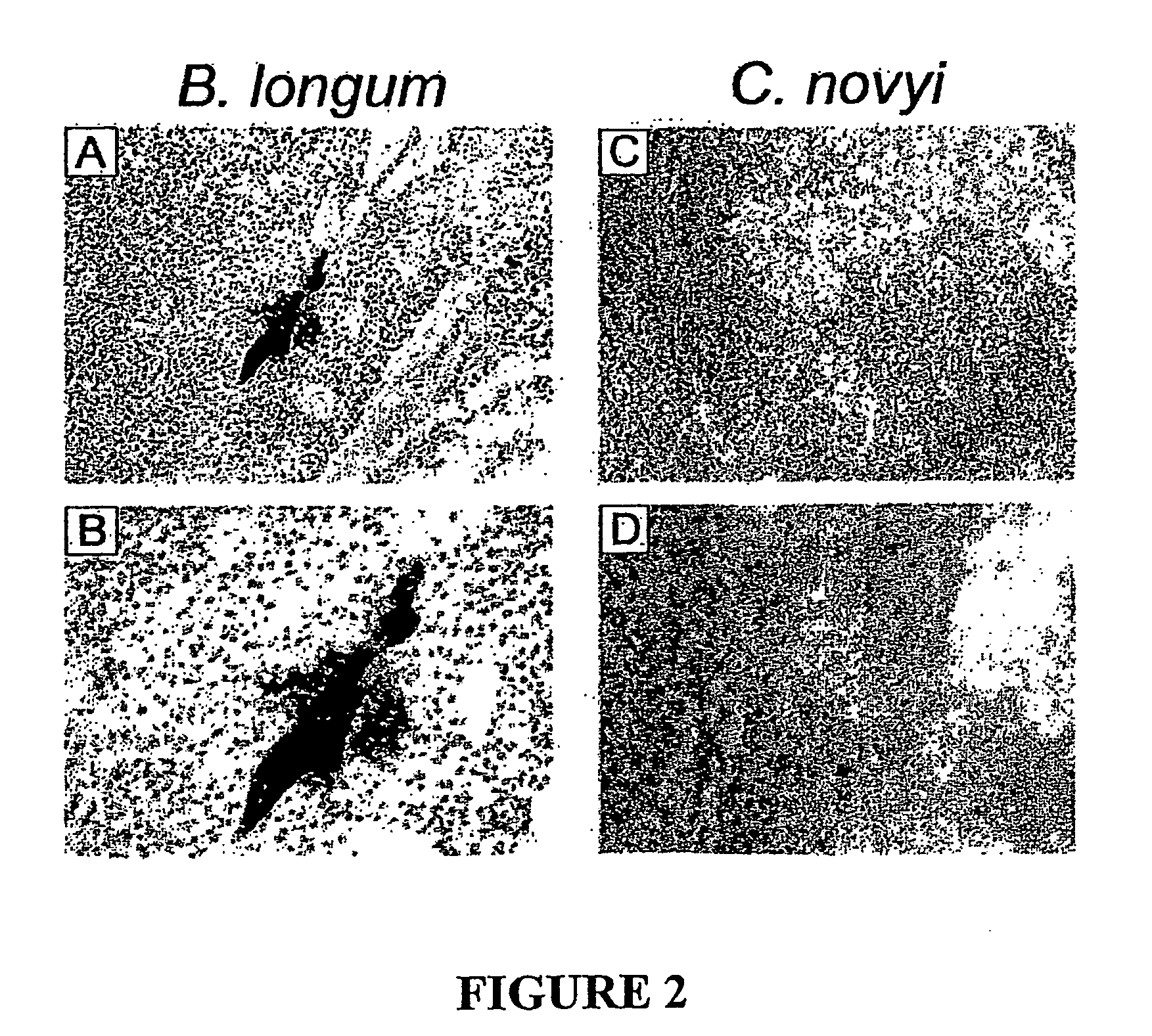Combination bacteriolytic therapy for the treatment of tumors
a bacteriolytic therapy and tumor technology, applied in the field of oncology, can solve the problems of limiting the efficacy of radiation and chemotherapeutic drugs, affecting the survival rate of patients, so as to achieve the effect of less toxic to the mammal
- Summary
- Abstract
- Description
- Claims
- Application Information
AI Technical Summary
Benefits of technology
Problems solved by technology
Method used
Image
Examples
example 1
[0029] In the work described below we attempted to exploit the fact that necrotic regions exist only within tumors and in no normal tissues. We wished to develop a toxic agent that could be specifically delivered to these areas and, in theory, could kill surrounding viable tumor cells. We chose to investigate anaerobic bacteria for this purpose. We hoped that a systematic screen for appropriate anaerobic bacteria that could kill tumor cells adjacent to the poorly vascularized regions, rather than just localize to such regions, would rejuvenate interest in this approach. Furthermore, we hoped that chemotherapeutic agents that killed the well-vascularized regions of tumors, when administered in conjunction with appropriate bacteria, would result in the destruction of a major proportion of neoplastic cells within the tumors.
[0030] We used the following materials and methods in our studies. Bacterial strains and growth. The bacterial strains tested in this study were purchased from the...
example 2
[0035] Choice Of Bacterial Species. From previous studies it was clear that species of anaerobic bacteria could grow within the hypoxic regions of tumors. An example is provided by B. longum, which, when injected intravenously into mice with subcutaneous tumors, grew specifically and robustly within the tumors but not within normal tissues (Yazawa, 2000)(Yazawa, 2001). Gram stains of sections of the tumors, however, revealed that most bacteria were tightly clustered within colonies rather than distributed throughout the necrotic regions (FIG. 2A, FIG. 2B). As we considered dispersion of the bacteria essential to achieve the desired effects, numerous anaerobic species of three different genera were tested in an effort to find one(s) exhibiting this phenotype (Table 1). For this purpose, Bifidobacterium and Lactobacillus strains were injected intravenously, while Clostodium strains, which are generally highly toxic when injected intravenously, were injected directly into tumors. Among...
example 3
[0036] Infiltration of the Tumor Mass Following Intravenous Injection of C. novyi spores. In order for an experimental therapy to represent a potentially viable tool for the treatment of disseminated cancers, it must have the capacity to be delivered systemically rather than through local, intratumoral injection. Though live bacteria are often toxic when injected intravenously, it has been shown that bacterial spores are non-toxic to normal animals. Accordingly, we found that large numbers (up to 108 in a volume of 500 ul) of C. novyi and C. sordellii spores could be injected intravenously into normal mice without causing any noticeable side effects. When intravenously injected into mice with subcutaneous B16 tumors, however, the C. novyi bacteria floridly germinated within the tumors within 16 hours (FIG. 2C). In contrast, no germinated bacteria were observed in the liver, spleen, kidney, lung, or brain of these mice (not shown). Similar results were observed after iv injection of ...
PUM
| Property | Measurement | Unit |
|---|---|---|
| Toxicity | aaaaa | aaaaa |
| Chemotherapeutic properties | aaaaa | aaaaa |
Abstract
Description
Claims
Application Information
 Login to View More
Login to View More - R&D
- Intellectual Property
- Life Sciences
- Materials
- Tech Scout
- Unparalleled Data Quality
- Higher Quality Content
- 60% Fewer Hallucinations
Browse by: Latest US Patents, China's latest patents, Technical Efficacy Thesaurus, Application Domain, Technology Topic, Popular Technical Reports.
© 2025 PatSnap. All rights reserved.Legal|Privacy policy|Modern Slavery Act Transparency Statement|Sitemap|About US| Contact US: help@patsnap.com



